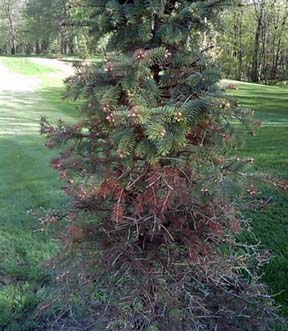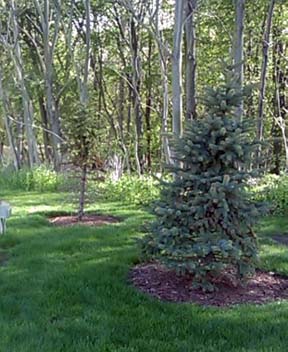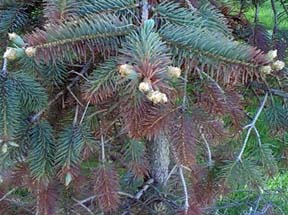Irrigating with saline groundwater
Editor’s note: This article is from the archives of the MSU Crop Advisory Team Alerts. Check the label of any pesticide referenced to ensure your use is included.
I recently received an inquiry from a landscaper regarding the effects of using saline groundwater to irrigate landscape plants. The landscaper observed that the lower limbs of several blue spruces in a client’s yard were almost completely dead (see photos). The dead limbs also matched where spray from the irrigation system hit the trees. An analysis of the irrigation water showed 275 mg/L of sodium and 523 mg/L of chloride. Both levels are high enough to potentially cause problems, especially when applied to foliage via overhead irrigation. As I’ve mentioned when discussing road salt issues in the landscape plants, chloride is often the biggest problem. In this case, the chloride level was well in excess of the 350 mg/L range that can cause severe problems for most plants. While chloride is an essential plant element, it is only needed in very small amounts and can be toxic at high levels.
Some parts of Michigan, such as east-central Michigan, have saline near-surface ground water. If you suspect problems with your irrigation water, have it analyzed. Colorado State University has a very good bulletin outlining problems with saline irrigation water and limits for various elements. http://www.ext.colostate.edu/pubs/crops/00506.pdf It is geared toward agricultural crops, but the information is applicable to landscape plants as well. If a water analysis shows high levels of sodium or chloride, consider switching irrigation sources to surface water or city water if available.
Thanks to Tim Guikema with Integrity Tree Services for sharing the images.
Spruce damage caused by saline water.

Dr. Cregg's work is funded in part by MSU's AgBioResearch.



 Print
Print Email
Email





